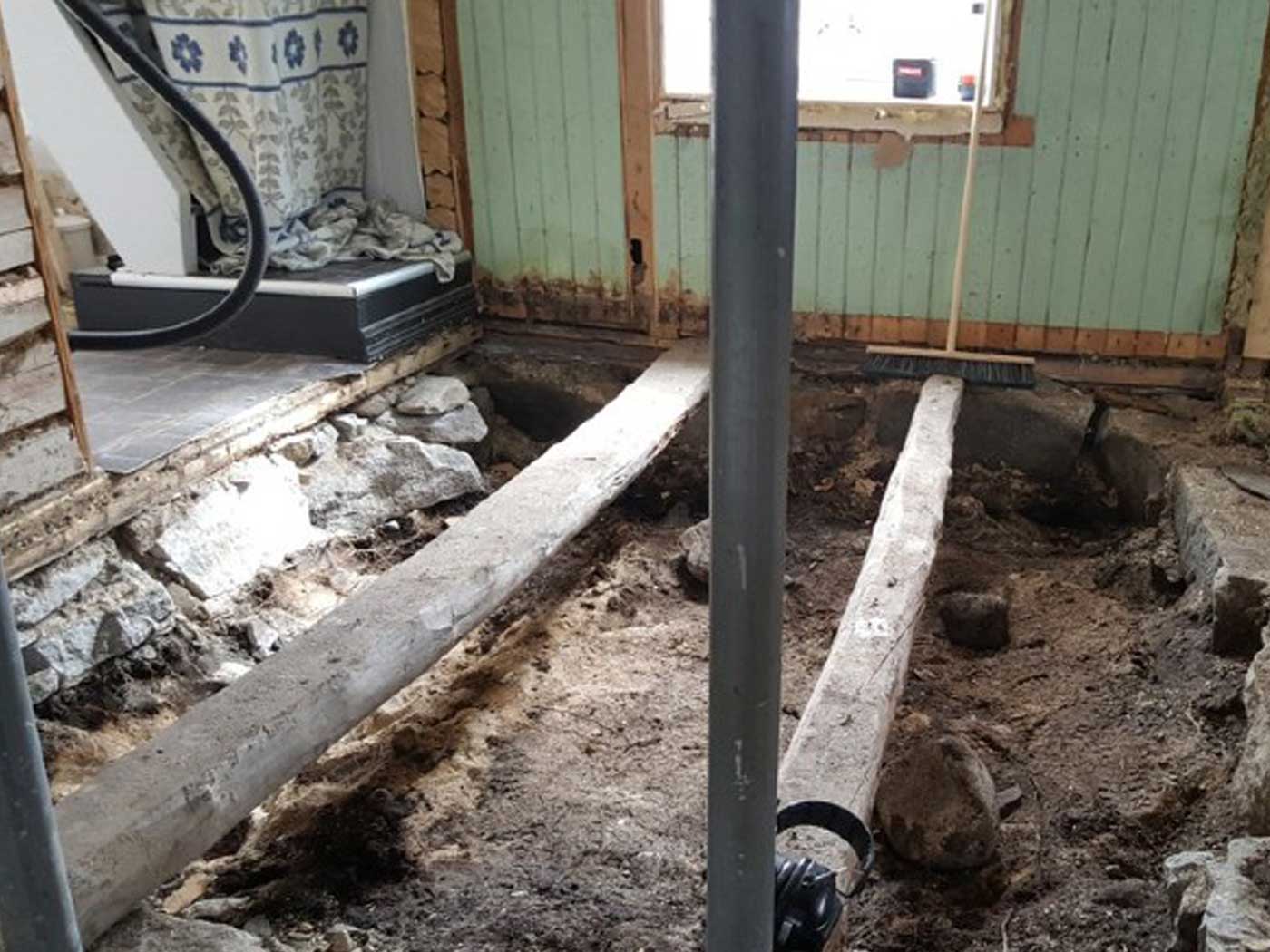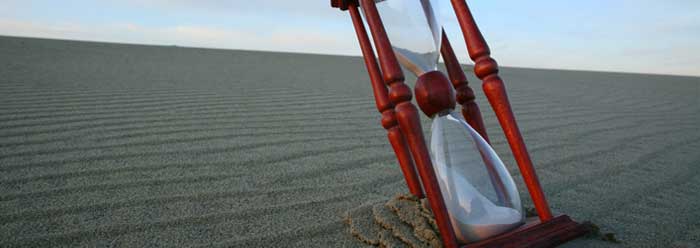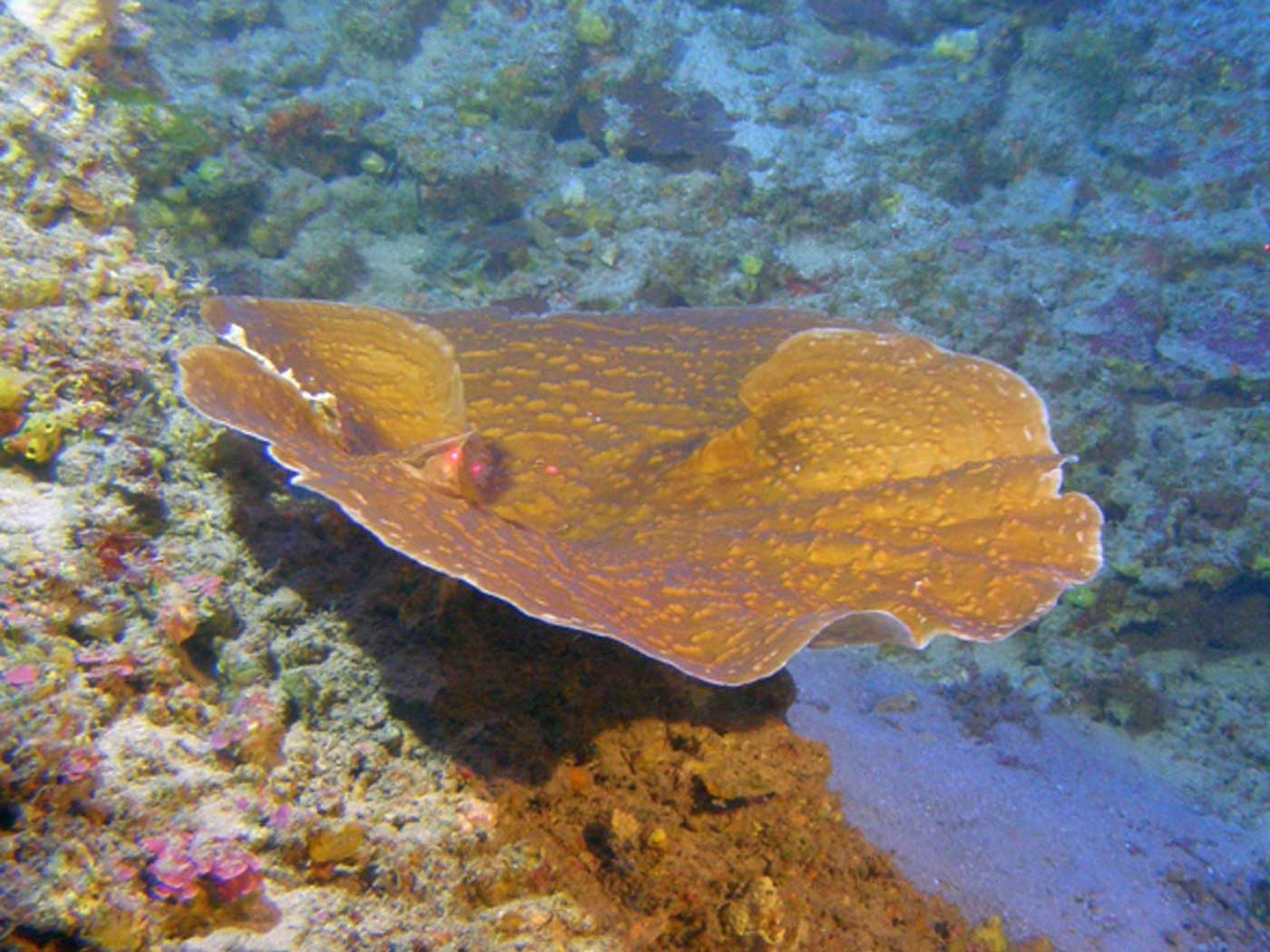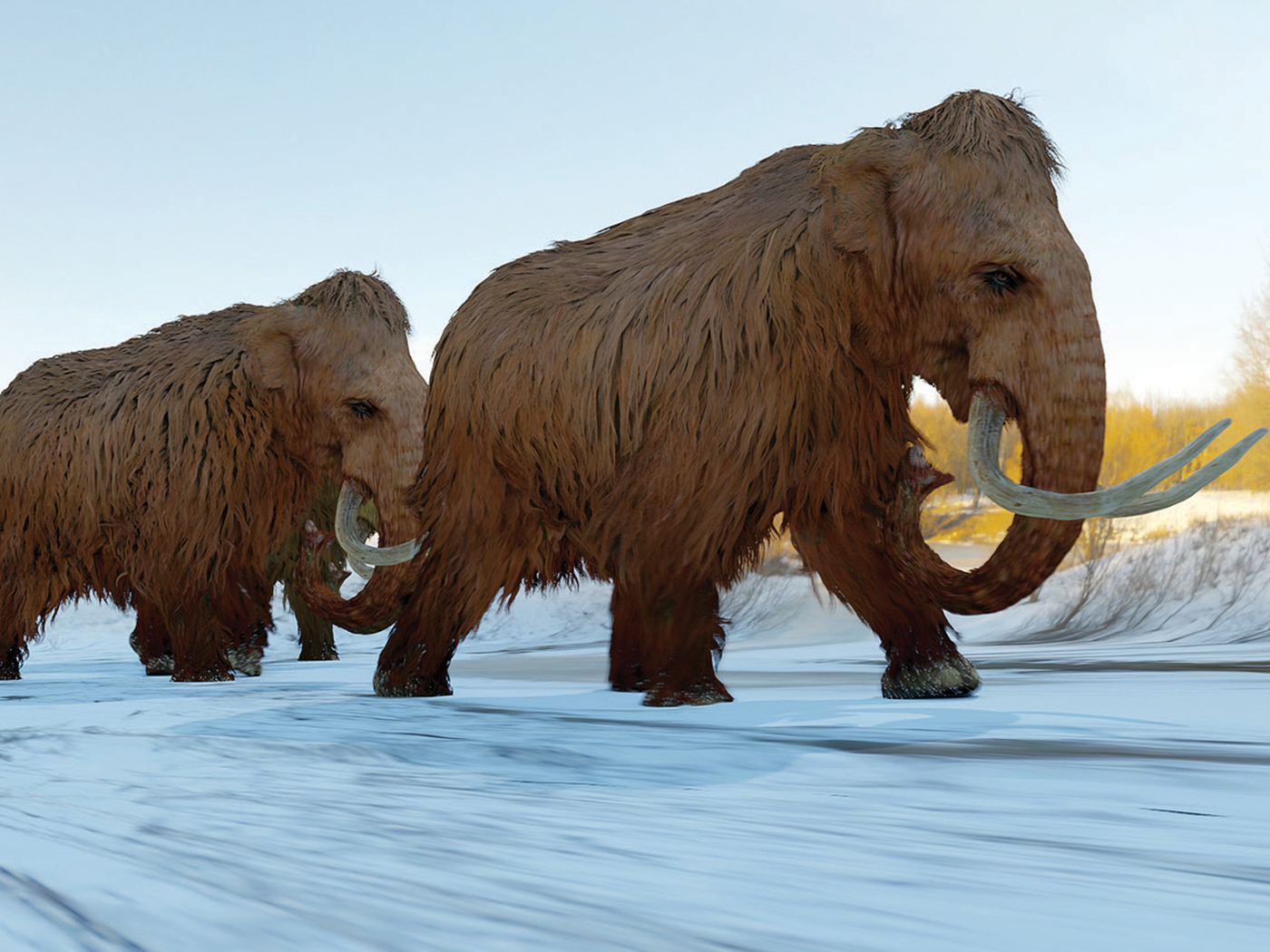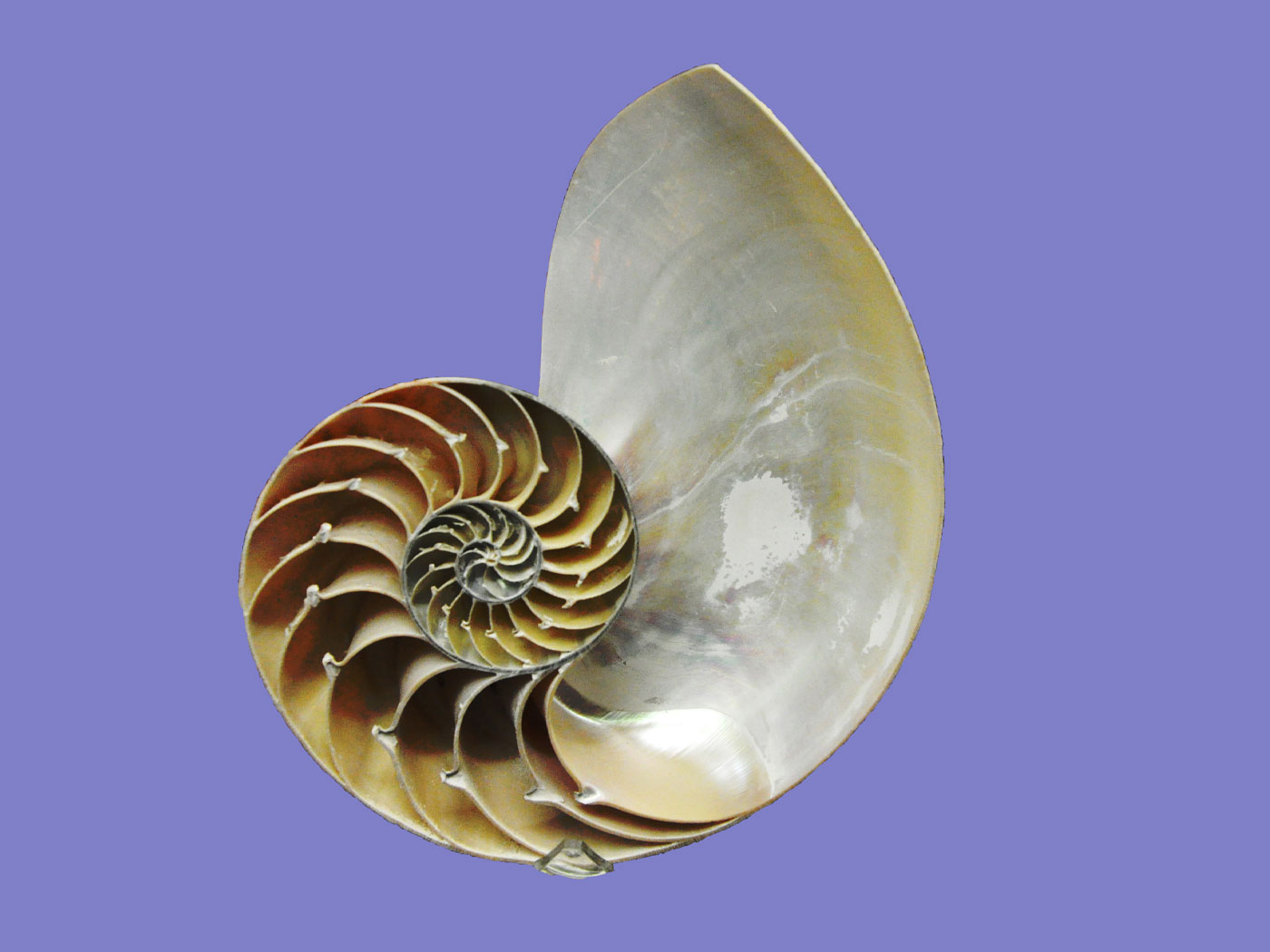Perhaps the most popular and highly regarded radioisotopic dating method currently in use is the U-Th-Pb dating of grains of zircon (ZrSiO4), baddeleyite (ZrO2), titanite (CaTiSiO5) and/or monazite (ThPO4). In the laboratory, rock samples are crushed and the zircon grains are separated from the other minerals by heavy liquid and other mineral separation techniques. After being mounted, the crystals can be analyzed using an instrument such as a SHRIMP (Sensitive High mass Resolution Ion MicroProbe) which focuses a very narrow ion beam onto the grains so that mass spectrometers can measure the ratios of the isotopes vaporized from the targeted spot. In this way, even different growth zones in individual crystals can be analyzed and thus "dated."
An alternative procedure is to take all the zircon grains liberated from a rock sample, and if they are of uniform composition, chemically digest them into solution for standard mass spectrometer analysis.
This dating method has become very popular for dealing with Precambrian terranes where it can often be difficult to resolve relationships between rock units and the geological history. But just how good is this dating method?
It must be assumed that when the zircon grains crystallized, no radiogenic Pb was in them, and that all the radiogenic Pb now measured was derived by radioactive decay from U and Th. However, there are several lines of evidence that indicate radiogenic Pb can be inherited during crystallization of the mineral grains, and that open-system behavior is common, with radiogenic Pb lost by diffusion due to the way the Pb is held in the crystal lattice.
Even as early as 1960 Tilton reported that Pb diffuses from zircon and U-bearing minerals at temperatures as low as 50°C.1 In fact, Wetherill already had evoked such open-system behavior because 238U and 235U "dates" he had obtained failed the crucial assumptions about initial conditions and a closed system.2 Both he and Nicolaysen3 independently developed a graphical "solution" consistent with a constant loss of U decay products. Wetherill4 and Wasserburg5 subsequently derived mathematical equations to describe this steady loss and demonstrated its consistency with published U-Pb age data.
Wasserburg5 also proposed that Pb loss by diffusion resulted from radiation damage to crystal lattices. In fact, it has now been confirmed that radiation damage can drastically increase the rate of Pb diffusion.6 While the diffusion rate is "known to be slow" and difficult to determine accurately,7 higher temperatures induce faster diffusion. This is dramatically illustrated by the contact metamorphic effects of a Tertiary granite stock on zircon crystals in surrounding regionally metamorphosed Precambrian sediments and volcanics.8 Within 50 feet of the contact, the 206Pb concentration drops from 150 ppm to 32 ppm, with a corresponding drop in 238U "ages" from 1405 Ma to 220 Ma.
Zircon crystals are often chemically and physically inhomogeneous,7 reflecting growth during crystallization from magma. Both zoned and unzoned zircon crystals may be found in the same rock. Pidgeon9 demonstrated that unzoned crystals can be the result of recrystallization of zoned crystals accompanied by loss of U, Th, and Pb, and "resetting" of the U-Pb "ages." Such recrystallization can be due to subsequent regional metamorphism. Kröner et al.10 found that high-grade metamorphism of granitic and related rocks reduced their U-Pb zircon "ages" from 1000 Ma down to 540 Ma, with zircons even from a single sample yielding U-Pb "ages" between 1072 Ma and 539 Ma. Pb-loss was severe and from entire grains.
Yet another significant problem for zircon U-Pb "dating" is the discovery in some metamorphic and granitic rocks of zircon crystals that yield much older "ages" than the accepted ages of the rocks. In the case of metamorphic rocks this has been interpreted as inheritance of those zircon grains from the original sources of the sediments, the zircons somehow surviving metamorphism without resetting of the U-Pb isotopic system.10,11 These "older" zircons in granitic rocks are likewise interpreted as being inherited from the source rocks that melted to produce the magmas.12,13 These situations are enigmatic, given the dramatic effect of similar temperatures during contact metamorphism. In some published studies, the inherited zircons are 5-10 times "older" than those matching the accepted ages of granites—1753 Ma in a 21 Ma Himalayan granite14; 3,500 Ma in a 426 Ma southeast Australian granodiorite15; and 1638 Ma in a 370 Ma New Zealand granite.16
However, if Pb is lost from some mineral grains, then it is to be expected it will be inherited in other crystals. Thus Williams et al.17 found unsupported (or excess) radiogenic Pb in a zircon crystal in an Antarctic gneiss, identified as such because the radiogenic Pb thus produced anomalously high "ages." Similar situations also result in "ages" hundreds of millions of years more than expected and are interpreted as due to excess radiogenic Pb, the origin of which is either explained as mixing from older source materials and/or due to migration as a result of fluids, temperature, and pressure.18,19 This all begs the question—should "anomalously old" zircons be interpreted as inheritance of the zircon crystals, or of the "excess" radiogenic Pb in the crystals? And if even weathering produces large Pb losses,20 then how reliable are any U-Pb zircon "ages"?
Finally, radiogenic Pb has been found to vary within most tested zircon grains on a 20 micron spatial scale.21 Some spots were characterized by very large concentrations of radiogenic Pb, up to 30 times the "expected" values. Furthermore, pronounced reproducible differences in radiogenic 206Pb/238U, and, thus apparent ages, have been demonstrated between four differently oriented faces of a large South African baddeleyite crystal.22 Isotopic ratios were also measured on the same crystal faces of 47 baddeleyite crystals but at different orientations over a 180° range, revealing a striking approximately sinusoidal variation with orientation in 206Pb/238U apparent ages. However, similar significant differences related to orientation were not detected in zircon or monazite crystals (within the analytical statistics). Nevertheless, monazite crystals contain random sub-microscopic blotchy patches that can vary up to 700 Ma in "age,"23 while monazite grains can yield negative "ages," such as -97 Ma in a 20 Ma Himalayan granite that also contains zircons yielding "ages" up to 1483 Ma.24
Clearly, the results of U-Th-Pb mineral dating are highly dependent on the investigator's interpretations. Radiogenic Pb is easily lost by diffusion from some crystals and the process is accelerated by heat, water, radiation damage, and weathering, while in other crystals it is inherited in excess. Apparent ages vary significantly within crystals at sub-microscopic scales, and on different crystal faces and at different crystal orientations. These effects make U-Th-Pb "dating" of whole mineral grains (and thus whole rocks) highly questionable at best. Such dubious radiogenic Pb behavior places U-Th-Pb mineral dating in doubt.
References
1 G.R. Tilton, "Volume Diffusion as a Mechanism for Discordant Lead Ages," Journal of Geophysical Research, 65 (1960): pp. 2933-2945.
2 G.W. Wetherill, "Discordant Uranium-Lead Ages, I," Transactions, American Geophysical Union, 37 (1956): pp. 320-326.
3 L.O. Nicolaysen, "Solid Diffusion in Radioactive Minerals and the Measurement of Absolute Age," Geochimica et Cosmochimica Acta, 11 (1957): pp. 41-59.
4 G.W. Wetherill, "Discordant Uranium-Lead Ages 2. "Discordant Ages Resulting from Diffusion of Lead and Uranium," Journal of Geophysical Research, 68 (1963): pp. 2957-2965.
5 G.J. Wasserburg, "Diffusion Processes in Lead-Uranium Systems," Journal of Geophysical Research, 68 (1963): pp. 4823-4846.
6 A. Meldrum, L.A. Boatner, W.J. Weber and R.C. Ewing, "Radiation Damage in Zircon and Monazite," Geochimica et Cosmochimica Acta, 62 (1998):
pp. 2509-2520.
7 J.K.W. Lee, I.S. Williams and D.J. Ellis, "Determination of Pb, U and Th Diffusion Rates in Zircon," in Research School of Earth Sciences Annual Report 1996 (1997, Canberra, Australia, Australian National University), pp. 121-122.
8 G.L. Davis, S.R. Hart and G.R. Tilton, "Some Effects of Contact Metamorphism on Zircon Ages," Earth and Planetary Science Letters, 5 (1968): pp. 27-34.
9 R.T. Pidgeon, "Recrystallization of Oscillatory Zoned Zircon: Some Geochronological and Petrological Implications," Contributions to Mineralogy and Petrology, 110 (1992): pp. 463-472.
10 A. Kröner, P. Jaeckal and I.S. Williams, "Pb-Loss Patterns in Zircons from a High-Grade Metamorphic Terrain as Revealed by Different Dating Methods: U-Pb and Pb-Pb Ages for Igneous and Metamorphic Zircons from Northern Sri Lanka," Precambrian Research, 66 (1994): pp. 151-181.
11 D.O. Froude, T.R. Ireland, P.O. Kinny, I.S. Williams and W. Compston, "Ion Microprobe Identification of 4100-4200 Ma-old Terrestrial Zircons," Nature, 304 (1983): pp. 616-618.
12 I.S. Williams, W. Compston and B.W. Chappell, "Zircon and Monazite U-Pb Systems and Histories of I-Type Magmas, Berridale Batholith, Australia," Journal of Petrology, 24 (1983): pp. 76-97.
13 Y.D. Chen and I.S. Williams, "Zircon Inheritance in Mafic Inclusions from Bega Batholith Granites, Southeastern Australia: An Ion Microprobe Study," Journal of Geophysical Research, 95 (1990): pp. 17,787-17,796.
14 R.R. Parrish and R. Tirrul, "U-Pb Age of the Baltoro Granite, Northwest Himalaya, and Implications for Monazite U-Pb Systematics," Geology, 17 (1989): pp. 1076-1079.
15 I.S. Williams, "Some Observations on the Use of Zircon U-Pb Geochronology in the Study of Granitic Rocks," Transactions of the Royal Society of Edinburgh, 83 (1992): pp. 447-458.
16 R.J. Muir, T.R. Ireland, S.D. Weaver and J.D. Bradshaw, "Ion Microprobe Dating of Paleozoic Granitoids: Devonian Magmatism in New Zealand and Correlations with Australia and Antarctica," Chemical Geology, 127 (1996): pp. 191-210.
17 I.S. Williams, W. Compston, L.P. Black, T.R. Ireland and J.J. Foster, "Unsupported Radiogenic Pb in Zircon: A Cause of Anomalously High Pb-Pb, U-Pb and Th-Pb Ages," Contributions in Mineralogy and Petrology, 88 (1984): pp. 322-327.
18 P. Copeland, R.R. Parrish and T.M. Harrison, "Identification of Inherited Radiogenic Pb in Monazite and its Implications for U-Pb Systematics," Nature, 333 (1988):
pp. 760-763.
19 L.S. Zhang and U. Schärer, "Inherited Pb Components in Magmatic Titanite and Their Consequence for the Interpretation of U-Pb Ages," Earth and Planetary Science Letters, 138 (1996): pp. 57-65.
20 T.W. Stern, S.S. Goldich and M.F. Newell, "Effects of Weathering on the U-Pb Ages of Zircon from the Morton Gneiss, Minnesota," Earth and Planetary Science Letters, 1 (1966): pp. 369-371.
21 W. Compston, "Variation in Radiogenic Pb/U within the SL 13 Standard," in Research School of Earth Sciences Annual Report 1966 (1997, Canberra, Australia, Australian National University), pp. 118-121.
22 M.T.D. Wingate and W. Compston, "Crystal Orientation Effects during SHRIMP Analysis of Mineral Targets," in Research School of Earth Sciences Annual Report 1996 (1997, Canberra, Australia, Australian National University), pp. 116-118.
23 A Cocherie, O. Legendre, J.J. Peucat and A.N. Kouamelan, "Geochronology of Polygenetic Monazites Constrained by in situ Electron Microprobe Th-U-Total Lead Determination: Implications for Lead Behaviour in Monazite," Geochimica et Cosmochimica Acta, 62 (1998): pp. 2475-2497.
24 R.R. Parrish, "U-Pb Dating of Monazite and its Applications to Geological Problems," Canadian Journal of Earth Sciences, 27 (1990): pp. 1431-1450.
* Dr. Snelling is professor of geology for the ICR Graduate School.




